◆Look for Old features◆
Since Meiji period Nakasendo has gone under road-constructions many times and the its landform has changed largely.
The picture on the right side shows the present situation of Oikawa. Its banks are now covered with stone-walls steadily. Either its bottom is paved. But we can imagine that people had to walk down to the water and up at a bottom of the ravine in those days.
We would undestand the degree of landform changing.
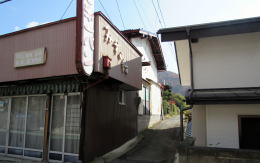
▲Ex-bread shop on the east side of Kaido
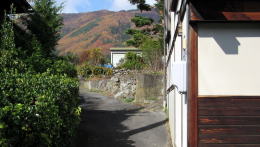
▲A View over a path is rural
As I mentioned before, the villages north of Hashiba was incorporated into the stage-town from 17th to 18th century. Then we find them more rural then the areas south of it. They has kept features of old farm villages.
The pictures above show many farm fields are spreading behind the houses along the road.
A brutal river Oikawa has formed an alluvial fan with many undulations. People have built some villages or towns and farm fields on such a slopeful land.
I can't find the border between Hashiba and Shinden. But I know somehow that the area of Shinden reaches to Hachimanjinja shrine over where is Hara area.
◆Gardens along Road◆
We would find the number of houses decreasing to scatter over the approaching way of Bosatsuji temple. The view along the road becomes a farm village.
Then we would enjoy looking at the Japanese style gardens of each house-site. Each family cares trees or plants to keep its garden beautiful.
From south to north, from Shinden to Kitsunezaka through Hara, the road keeps sloping down. A very long slope upward continues from Kitsunezaka to Wadatoge pass through the stage-town.
The slope and the curves gives the walkers many interesting views by showing the distancing ― from near to far ― images. So to speak the depth of scenes.
We would look forward to the next view after walking around the curve, being interested landscapes over there. We would goe on without geting tired.
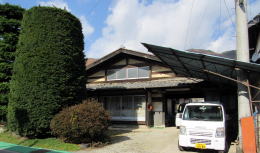
▲A house of Honmune architectural style
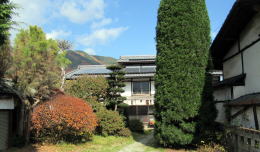
▲A beautiful garden neetly cared about
The houses along the road have a wide front and a shallow depth, because they have a larger site in a rural area than in a core town.
We can imagine the townscape in the old days by finding the houses in traditional style along th road.
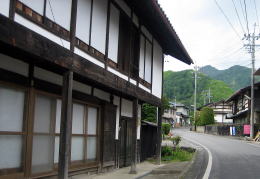
▲The font side of the traditional style
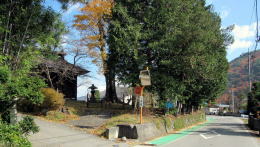
▲A view of the shrine hall behind trees
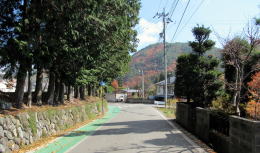
▲The road turns around left
|
